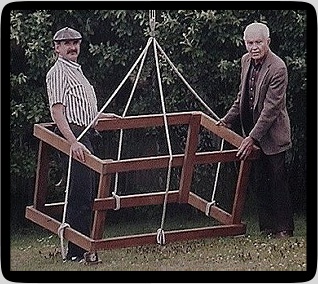







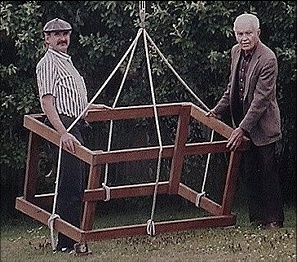

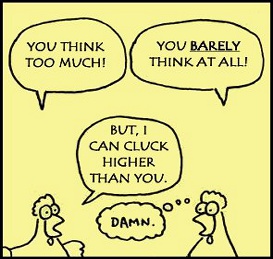
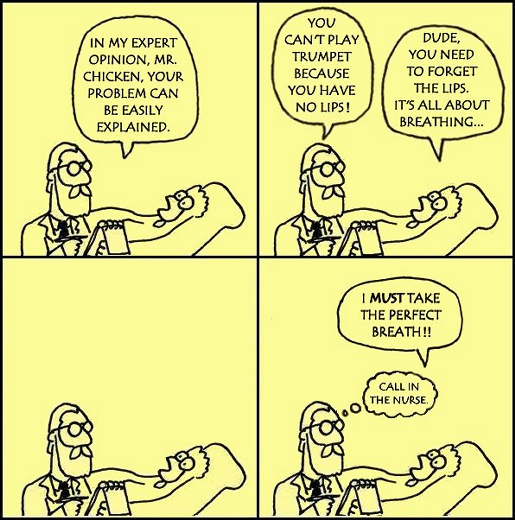

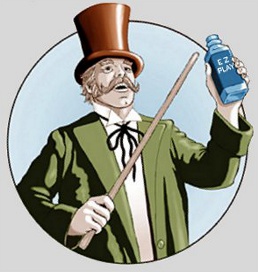

1."Over-analysis = Paralysis"
Probably the most over-used truism.
The is the phrase quoted by players who want to make a general point that too much thinking is a bad thing, especially regarding embouchure mechanics, and that the conscious mind can easily disrupt the natural coordination of the learning process. It's a good sentiment, as many players have discovered through personal experience. However, it's frequently twisted into an over-generalization regarding ANY analysis, a warning to completely avoid analyzing anything about your playing. And that, of course, is ridiculous.
From a BE perspective, I suggest that players who believe that it is dangerous to analyze the physical components of playing, are simply lacking the understanding of HOW to do it properly. When analysis is correctly applied to learning the mechanics of an instrument, there is no confusion, and therefore no paralysis.
2. "Embouchures Are Developed, Not Discovered"
On the contrary, embouchures are both developed AND discovered.
The development part is easy to understand, as more practice time will often yield results. But, there are certain developmental angles that can help you obtain faster and more complete results. These angles can be discovered if you know how to look for them. They tend to generate "aha" moments, where you suddenly understand a new way of approaching the same old problem.
Of course, even after discovering a new angle, the work still needs to be done. But without the discovery of - for example - a better way to leverage the position of your lips, you would stay stuck on the same plateau, forever.
3. "The Only Purpose of the Lips is to Vibrate"
Credit - or blame - Claude Gordon for this one. As a child, he was led astray by a well-meaning teacher, and developed many problems. As a successful trumpeter later in life, he concluded that all his former problems had stemmed from focusing too much on the lips, and so he actively sought to steer student away from any kind of lip emphasis. He would tell students to "forget the lip," and that "if you leave the lip alone, with proper practice, it will take care of itself."
His many arguments against lip analysis are, on the surface, compelling. However, upon closer observation, many of his statements simply fall apart, as they are directly contradicted either by evidence from other methods, or from player testimonials.
For me, what really emerges is the idea that Claude was incredibly hurt by his trumpet teacher as a youth, and the resulting pain strongly influenced his approach to the trumpet. If he had focused his ire on particular dogmatic approaches offered by misguided teachers - such as forcing students to "look" a particular way - he would have been on firmer ground. Instead, he painted with very broad brushstrokes, and sought to condemn ANY training which focused on the lips. As a result, some of the comments from his book, Brass Playing Is No Harder Than Deep Breathing, lend themselves to excess.
For example, in warning against off-the-horn exercises, he says, "All of this theory is based on the false assumption that the lips play the horn." It's a dramatic statement... but where are the players who actually believe it? Where is it written? In over 30 years of teaching, I've never heard anyone dogmatically claim that "the lips play the horn." Such all-or-nothing type statements tend to polarize, not enlighten. It's the baby/bathwater syndrome.
"The lips play the horn," or "the lips get the high notes," are very different from statements offered by BE, which can be summed up as "The lips are the most important embouchure component, and need to be trained accordingly." A simple analysis shows that the lips do a lot more than just vibrate. They actively resist the air from the lungs, creating an airstream. They can change shape, and when properly trained, are capable of continuously flexing to form the aperture size appropriate for different registers.
Oh, and yes, they also vibrate!
"...form the habit of keeping the lips in motion while playing. This will train the lip muscles properly..."
Herbert L. Clarke
4. Precision Valve Alignment, Cryogenic Freezing, Weighted Valve Caps, etc.
Players are always looking for "an edge," a way to get more performance from their instrument. In my opinion, the majority of these "enhancements" are triggered by the mind rather than by any measurable physical effect.
I know that this will upset a lot of people, but here is my evidence.
Another work in progress...
5. "You Can't Learn to Play by Reading a Book"
Implied in this truism is the idea that learning can ONLY take place through the process of imitating a live teacher. Or, that ONLY a live teacher can diagnose your problems.
Both are false. To some degree, both insult your capacity to think for yourself, and to know.
Teachers are a two-edged sword. They can be a great help - or a tragic hindrance, if the student blindly follows poor advice. Either way, the claim that teachers are the only way to learn, misses the point. Teachers disseminate knowledge. And knowledge, whether it comes from the mouth of a teacher, or from any other source, such as a book, is what players are really looking for.
Teachers can be a valuable resource. But ultimately, you must become your own teacher, and assume responsibility for what works best for you. And knowledge - however acquired - is the key to your success.
6. "Seeing Is Believing"
Many students consider themselves to be so-called "visual learners." They watch the teacher's lips like a hawk, hoping to unlock the secret of he/she does it. Or, they want to see a video for the same purpose. If they can't see something, they feel insecure.
There are three problems here.
1. The teacher may have a significantly different leveraged lip setup than the student.
2. The micro-movements of the lips cannot be easily seen or replicated.
3. The eyes, like all senses, can be fooled.
The first two points are self-explanatory. As for the third point, it is much better to bring all available senses into play during the learning process, especially the sense of feel. Otherwise, you may be restricting yourself, and reaching a wrong conclusion, as you did with the "Impossible Box" at the top of the page.
Here is another eye trick:
Which is darker, square A or B? The answer is, they are the same. Don't believe it?
Download the image into a photo edit program, cut out a piece of the A square and move it to B. You will find that the two squares are identical in shading.
7. "Mouthpieces Are Like Shoes"
So, are embouchures like feet?
To be continued...
Probably the most over-used truism.
The is the phrase quoted by players who want to make a general point that too much thinking is a bad thing, especially regarding embouchure mechanics, and that the conscious mind can easily disrupt the natural coordination of the learning process. It's a good sentiment, as many players have discovered through personal experience. However, it's frequently twisted into an over-generalization regarding ANY analysis, a warning to completely avoid analyzing anything about your playing. And that, of course, is ridiculous.
From a BE perspective, I suggest that players who believe that it is dangerous to analyze the physical components of playing, are simply lacking the understanding of HOW to do it properly. When analysis is correctly applied to learning the mechanics of an instrument, there is no confusion, and therefore no paralysis.
2. "Embouchures Are Developed, Not Discovered"
On the contrary, embouchures are both developed AND discovered.
The development part is easy to understand, as more practice time will often yield results. But, there are certain developmental angles that can help you obtain faster and more complete results. These angles can be discovered if you know how to look for them. They tend to generate "aha" moments, where you suddenly understand a new way of approaching the same old problem.
Of course, even after discovering a new angle, the work still needs to be done. But without the discovery of - for example - a better way to leverage the position of your lips, you would stay stuck on the same plateau, forever.
3. "The Only Purpose of the Lips is to Vibrate"
Credit - or blame - Claude Gordon for this one. As a child, he was led astray by a well-meaning teacher, and developed many problems. As a successful trumpeter later in life, he concluded that all his former problems had stemmed from focusing too much on the lips, and so he actively sought to steer student away from any kind of lip emphasis. He would tell students to "forget the lip," and that "if you leave the lip alone, with proper practice, it will take care of itself."
His many arguments against lip analysis are, on the surface, compelling. However, upon closer observation, many of his statements simply fall apart, as they are directly contradicted either by evidence from other methods, or from player testimonials.
For me, what really emerges is the idea that Claude was incredibly hurt by his trumpet teacher as a youth, and the resulting pain strongly influenced his approach to the trumpet. If he had focused his ire on particular dogmatic approaches offered by misguided teachers - such as forcing students to "look" a particular way - he would have been on firmer ground. Instead, he painted with very broad brushstrokes, and sought to condemn ANY training which focused on the lips. As a result, some of the comments from his book, Brass Playing Is No Harder Than Deep Breathing, lend themselves to excess.
For example, in warning against off-the-horn exercises, he says, "All of this theory is based on the false assumption that the lips play the horn." It's a dramatic statement... but where are the players who actually believe it? Where is it written? In over 30 years of teaching, I've never heard anyone dogmatically claim that "the lips play the horn." Such all-or-nothing type statements tend to polarize, not enlighten. It's the baby/bathwater syndrome.
"The lips play the horn," or "the lips get the high notes," are very different from statements offered by BE, which can be summed up as "The lips are the most important embouchure component, and need to be trained accordingly." A simple analysis shows that the lips do a lot more than just vibrate. They actively resist the air from the lungs, creating an airstream. They can change shape, and when properly trained, are capable of continuously flexing to form the aperture size appropriate for different registers.
Oh, and yes, they also vibrate!
"...form the habit of keeping the lips in motion while playing. This will train the lip muscles properly..."
Herbert L. Clarke
4. Precision Valve Alignment, Cryogenic Freezing, Weighted Valve Caps, etc.
Players are always looking for "an edge," a way to get more performance from their instrument. In my opinion, the majority of these "enhancements" are triggered by the mind rather than by any measurable physical effect.
I know that this will upset a lot of people, but here is my evidence.
Another work in progress...
5. "You Can't Learn to Play by Reading a Book"
Implied in this truism is the idea that learning can ONLY take place through the process of imitating a live teacher. Or, that ONLY a live teacher can diagnose your problems.
Both are false. To some degree, both insult your capacity to think for yourself, and to know.
Teachers are a two-edged sword. They can be a great help - or a tragic hindrance, if the student blindly follows poor advice. Either way, the claim that teachers are the only way to learn, misses the point. Teachers disseminate knowledge. And knowledge, whether it comes from the mouth of a teacher, or from any other source, such as a book, is what players are really looking for.
Teachers can be a valuable resource. But ultimately, you must become your own teacher, and assume responsibility for what works best for you. And knowledge - however acquired - is the key to your success.
6. "Seeing Is Believing"
Many students consider themselves to be so-called "visual learners." They watch the teacher's lips like a hawk, hoping to unlock the secret of he/she does it. Or, they want to see a video for the same purpose. If they can't see something, they feel insecure.
There are three problems here.
1. The teacher may have a significantly different leveraged lip setup than the student.
2. The micro-movements of the lips cannot be easily seen or replicated.
3. The eyes, like all senses, can be fooled.
The first two points are self-explanatory. As for the third point, it is much better to bring all available senses into play during the learning process, especially the sense of feel. Otherwise, you may be restricting yourself, and reaching a wrong conclusion, as you did with the "Impossible Box" at the top of the page.
Here is another eye trick:
Which is darker, square A or B? The answer is, they are the same. Don't believe it?
Download the image into a photo edit program, cut out a piece of the A square and move it to B. You will find that the two squares are identical in shading.
7. "Mouthpieces Are Like Shoes"
So, are embouchures like feet?
To be continued...
On the far right is my old friend Jerry
Andrus, who was an illusionist
extraordinaire. Like the man on the
left, I myself have stood inside this
crate - the "Impossible Box" - which
hung for years in Jerry's front yard.
There was no photo retouching. How
was it done?
Here we look at some
questionable "truths,"
about brass playing and
also have a little fun.
